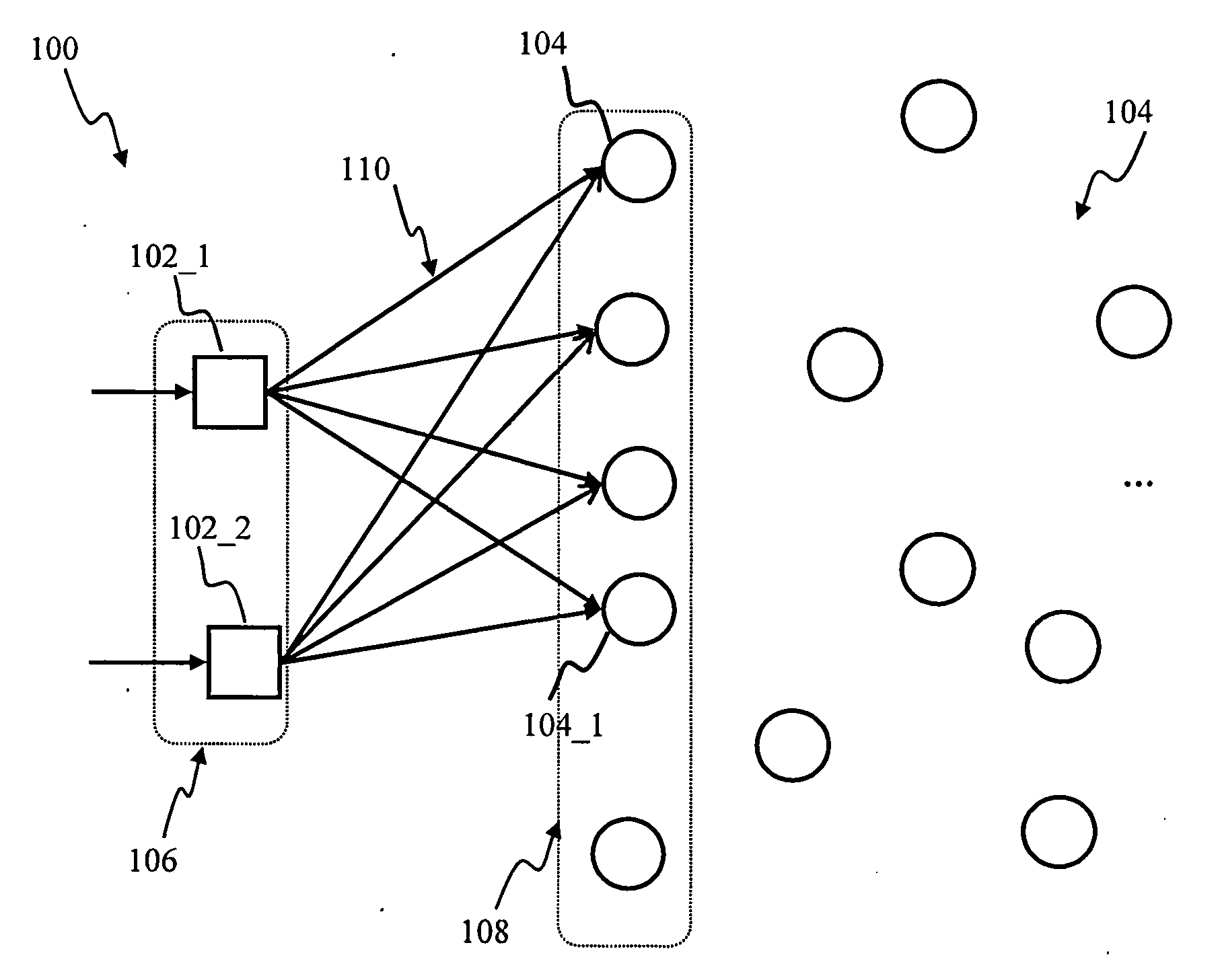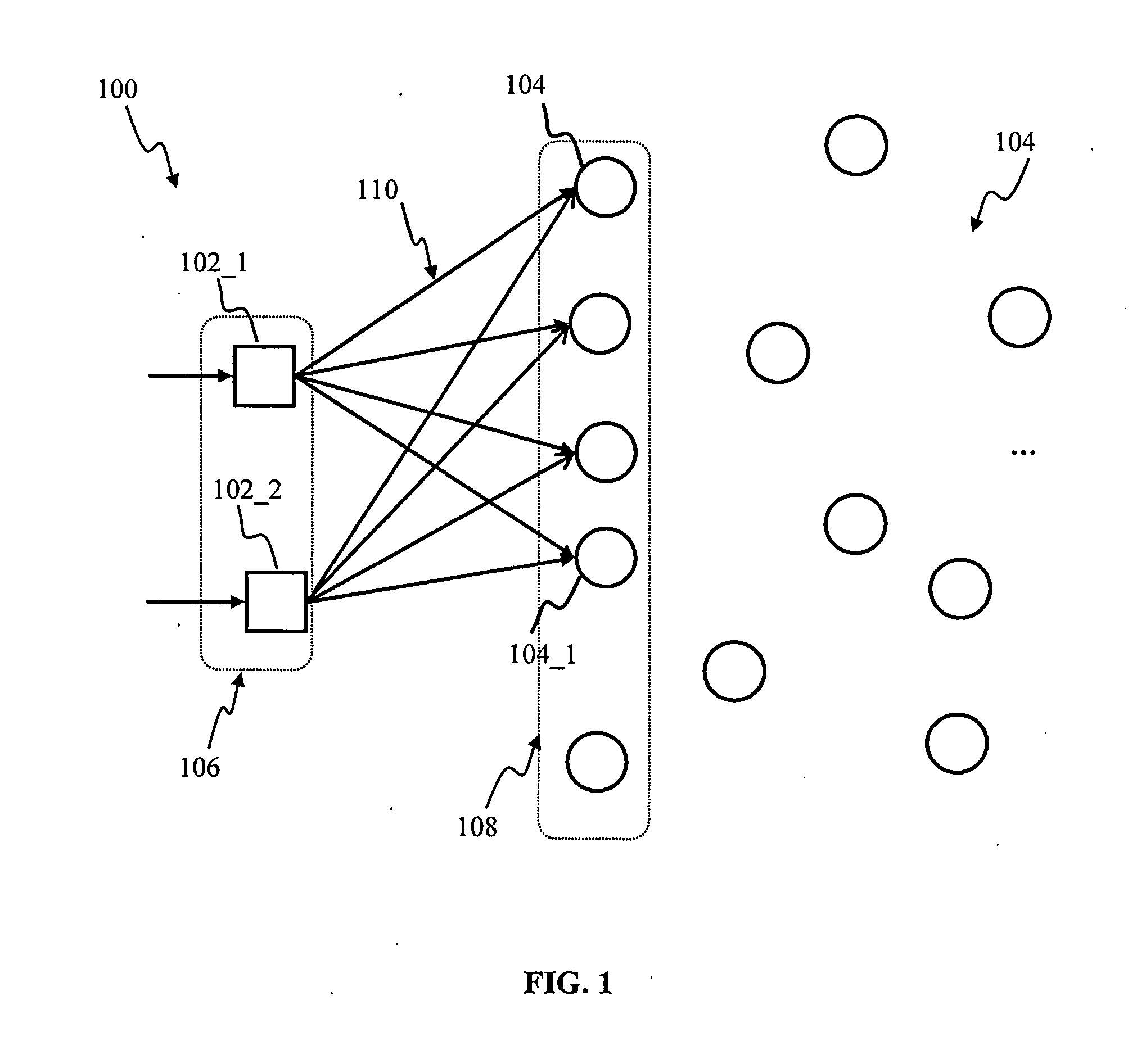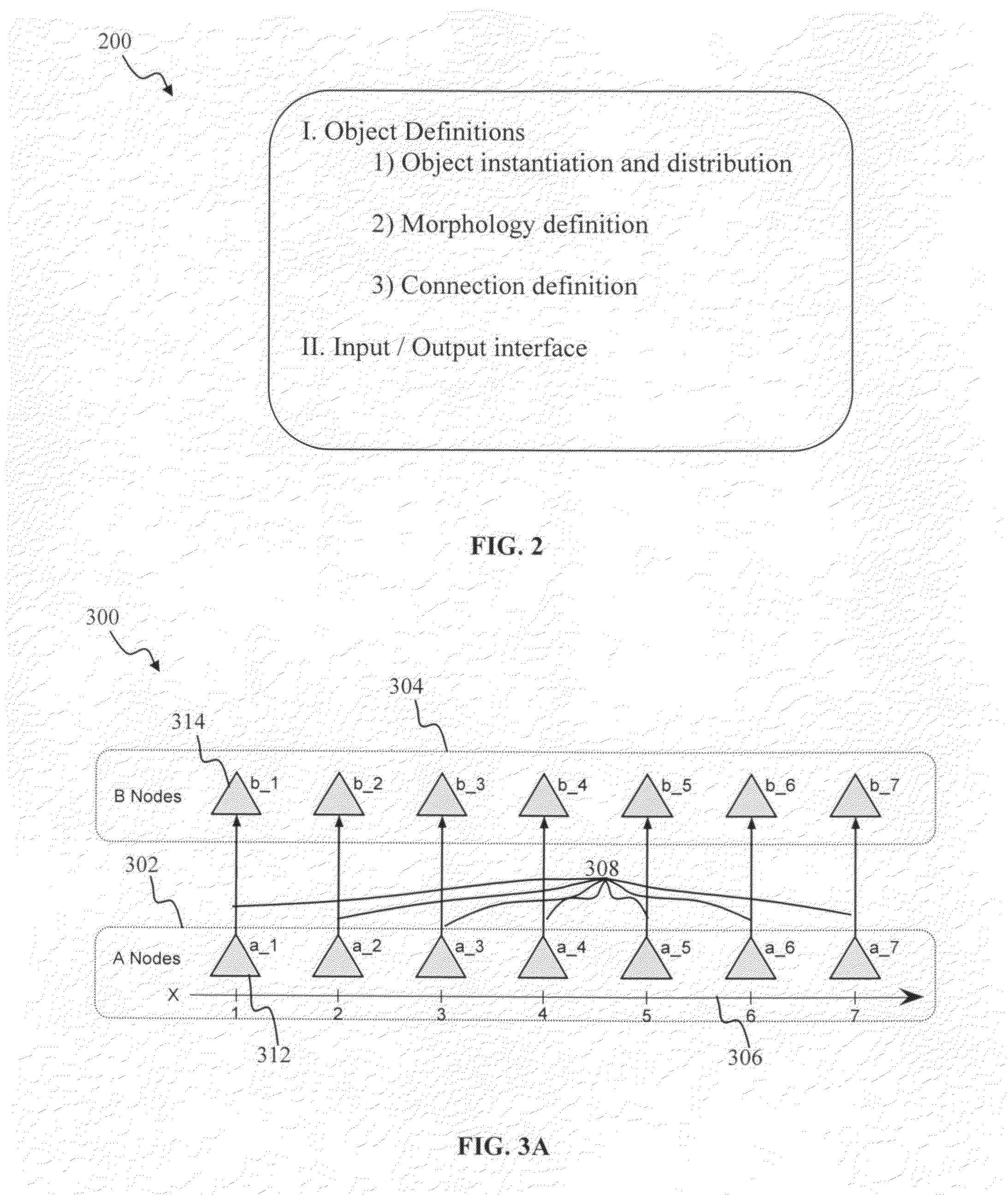Round-trip engineering apparatus and methods for neural networks
a neural network and engineering apparatus technology, applied in biological neural network models, instruments, digital computers, etc., can solve problems such as inconvenient parallel simulation of neuronal systems, inconvenient use, and inability to meet the needs of neuronal system parallel simulation,
- Summary
- Abstract
- Description
- Claims
- Application Information
AI Technical Summary
Benefits of technology
Problems solved by technology
Method used
Image
Examples
example 3
[0172]The following statement:[0173]exc OR inh TAGGED all
may add tag ‘all’ to all ‘exc’ and ‘inh’ neurons for easy reference.
example 4
[0174]The following statement:[0175](exc AND id<400) OR (inh AND id<100) TAGGED first_half
may cuts the network in half by assigning an extra tag to the first half of elements.
OF Operator and Subsets
[0176]In some implementations, the expression
Listing. 4n OF
may return a list of n random elements satisfying the tag filter condition. If the tag filter returns fewer than n elements, then some elements may be duplicated, so that the total number of elements returned by the expression of Listing 5 is equal to n. The OF operator may not assign new tags. The OF operator may select a subset of elements. To assign tags to the elements of the subset, the TAGGED operator may be used. The expression
Listing 5.100 OF cones TAGGED S_cones
may select 100 elements from the node population of cones and may tag individual selected elements as the S_cones. Similarly, the expressions
Listing 6.300 OF (cones AND NOT S_cones) TAGGED M_conescones AND NOT M_cones AND NOT S_cones TAGGED L_cones
may select 300 e...
example 6
[0177]According to some implementations, a network comprising 800 excitory (exc) and 200 inhibitory (inh) neurons may be split into two equal sub-networks, subnetwork1 and subnetwork2, each comprising 400 exc and 100 inh randomly selected neurons, as follows:
Listing 7.400 OF exc TAGGED subnetwork1100 OF inh TAGGED subnetwork1400 OF (exc AND NOT subnetwork1) TAGGED subnetwork2100 OF (inh AND NOT subnetwork1) TAGGED subnetwork2
[0178]Contrast the implementation of Listing 7 with the following statements:
Listing 8.500 OF (exc OR inh) TAGGED subnetwork1500 OF (exc OR inh) TAGGED subnetwork2.
The statements of Listing 8 do not guarantee that the each of subnetwork1 and subnetwork2 comprises exactly 400 excitatory and 100 inhibitory neurons.
PUT Operator and Instantiation of Units
[0179]This PUT operator may be used to instantiate and tag network units as follows:
Listing 9.PUT n OF unit_class
The PUT operator may be an instruction to create n instances of the ‘unit_class’ type and tag them as ...
PUM
 Login to View More
Login to View More Abstract
Description
Claims
Application Information
 Login to View More
Login to View More - R&D
- Intellectual Property
- Life Sciences
- Materials
- Tech Scout
- Unparalleled Data Quality
- Higher Quality Content
- 60% Fewer Hallucinations
Browse by: Latest US Patents, China's latest patents, Technical Efficacy Thesaurus, Application Domain, Technology Topic, Popular Technical Reports.
© 2025 PatSnap. All rights reserved.Legal|Privacy policy|Modern Slavery Act Transparency Statement|Sitemap|About US| Contact US: help@patsnap.com



